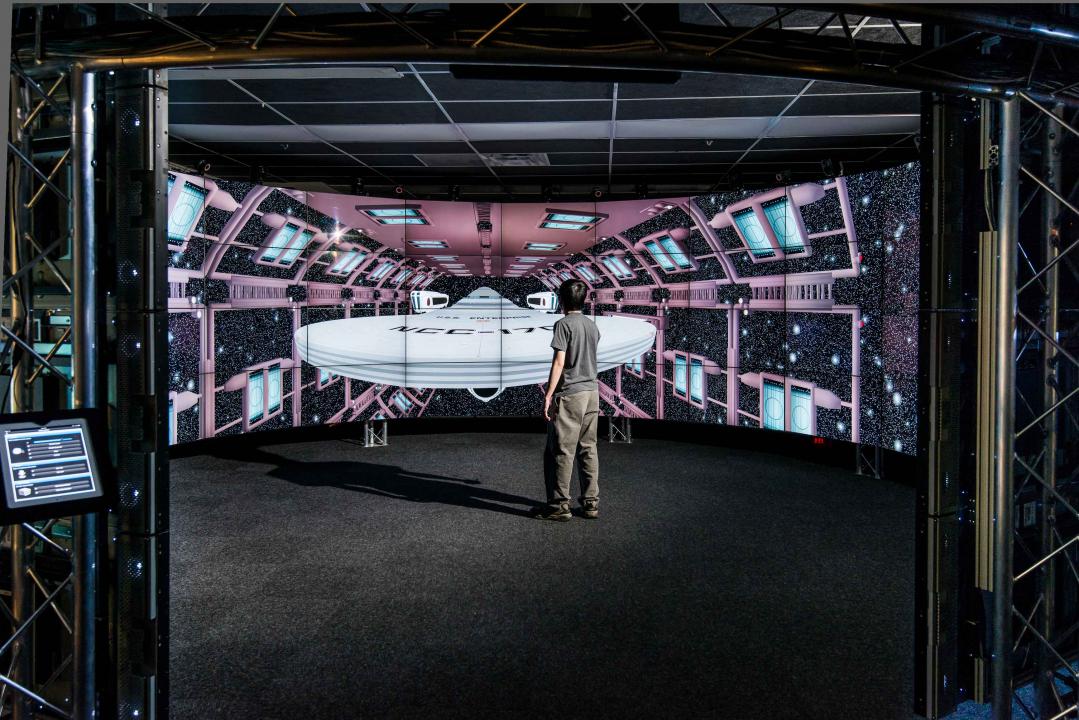|
|
||||||||||||||||||
UIC/EVL Helps Kick Off NSF’s Holodeck Social Media Campaign
Participants: Arthur Nishimoto
Capitalizing on Star Trek’s 50th anniversary, which debuted on September 8, 1966, the National Science Foundation (NSF) has developed a social media #holodeck campaign to promote its support of cutting-edge research in virtual reality and immersive environments. NSF recognizes that the Electronic Visualization Laboratory (EVL) at the University of Illinois at Chicago (UIC) has a long history of leadership in this area, so not only included the lab in its campaign, but kicked off its campaign by highlighting EVL’s work. Specifically, NSF is focusing on Star Trek’s Holodeck - a virtual reality environment that can fabricate lifelike experiences and enable training, research and development, mental and physical health, entertainment and exploration. Coincidentally, the term “holodeck” has often been applied to EVL’s CAVE™ Automatic Virtual Environment, introduced in 1992, and its CAVE2™ Hybrid Reality Environment, introduced in 2012. Both these unique displays were designed and built with major funding from NSF. Inspired by the CAVE2 system, UIC Computer Science graduate student and EVL research assistant Arthur Nishimoto spent much of his spare time over the past several years developing a full-scale virtual model of Star Trek’s starship Enterprise. The CAVE2 is a holodeck-like room that transports people who enter to the Enterprise, where they can walk through various rooms or fly through the cosmos. NSF selected a photo of Nishimoto in the CAVE2 environment, controlling the Enterprise, to put on its introductory blog. The Holodeck, as envisioned by Star Trek’s creator Gene Roddenberry, is a fully-immersive artificial environment you can enter and experience with all your senses. The Holodeck is several decades away, and will take a great deal of basic research in computer visualization, sensors, data analysis, perceptual psychology and a range of other disciplines, as well as technological advances in virtual reality, augmented reality, holography, displays, projection and brain-machine interfaces. EVL, along with its many collaborators, has been involved in all these areas. NSF has been supporting research in virtual reality and immersive environments since the 1970s - predating “Star Trek: Next Generation.” Its goal for the #holodeck campaign is to raise awareness among public, media and legislative audiences of the science and engineering challenges involved in creating the Holodeck - or immersive experiences generally - and to promote the work of its many federally-supported researchers who are developing radically new kinds of multi-sensory experiences using computing and engineered devices. See the NSF introductory #holodeck blog. See the NSF blog. See NSF at Facebook. See NSF Twitter. Email: maxine@uic.edu Date: September 19, 2016 |